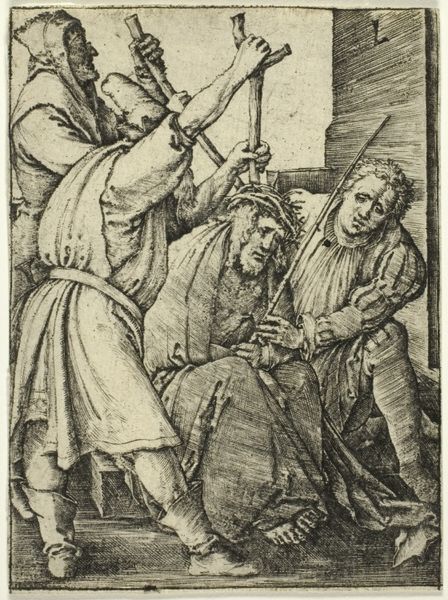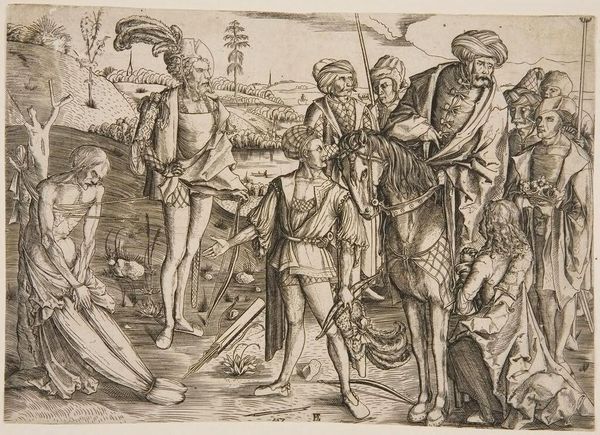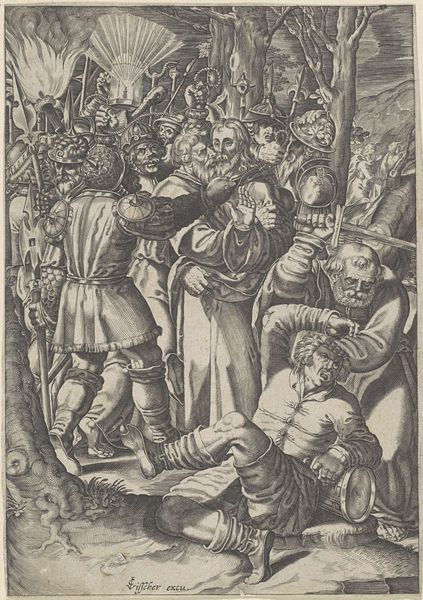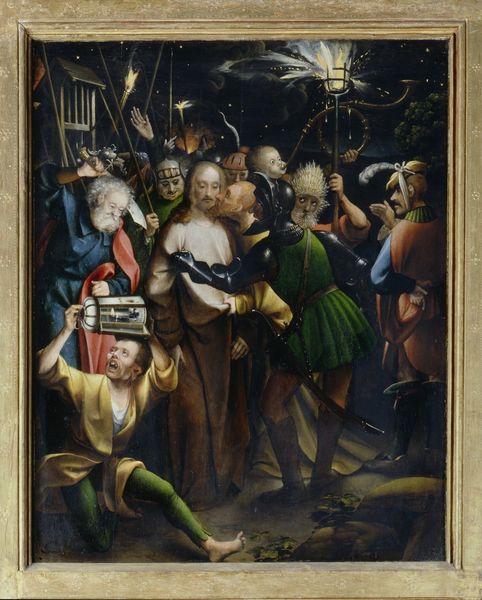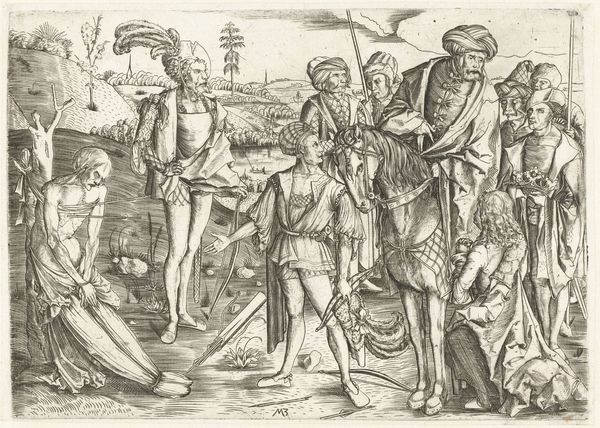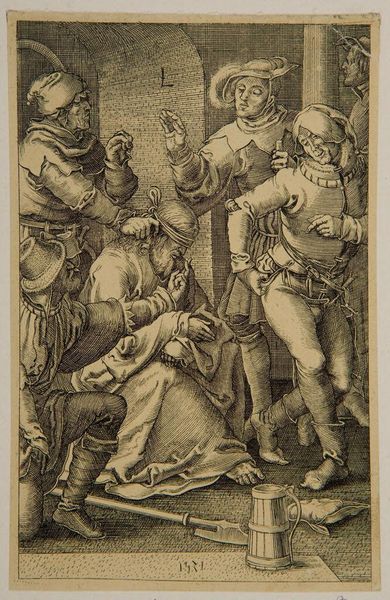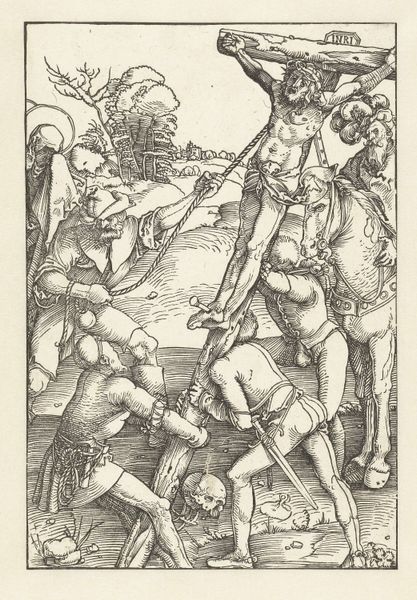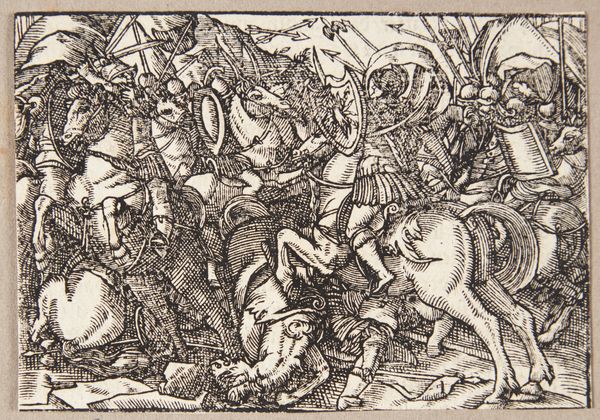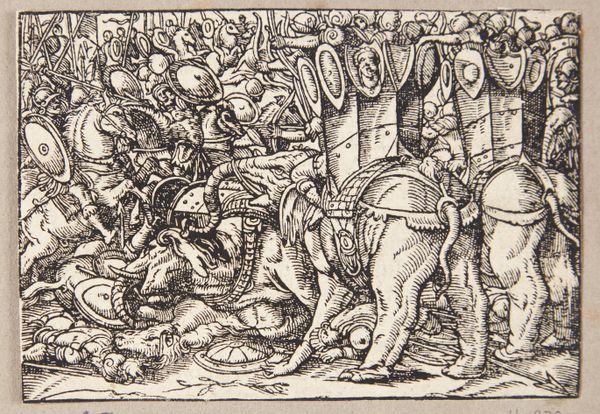
painting, oil-paint, mural
#
medieval
#
narrative-art
#
painting
#
oil-paint
#
landscape
#
perspective
#
figuration
#
oil painting
#
genre-painting
#
history-painting
#
northern-renaissance
#
academic-art
#
mural
Copyright: Public domain
Editor: Here we have a detail from Jerg Ratgeb's "Barbara-Altar (Schwaigern)," painted around 1510. It appears to be oil on... well, something, maybe panel? The scene depicts figures on horseback, almost jousting, within a rather intricate landscape. What’s immediately striking is how the pomp of the riders clashes with the seemingly chaotic, almost naive perspective of the background figures. What do you make of that contrast? Curator: It's a compelling observation. Ratgeb's placement of such theatrically dressed figures in what should be a secondary plane – the landscape with the observing crowds – does two key things, I think. First, it amplifies the performance of power, situating the joust within a visually tangible social and political context, with observers on the grassy plain in the background, presumably to witness and legitimate noble activities. It also highlights how the "realistic" landscape tradition was becoming entangled with the theatrics of princely self-fashioning, effectively transforming a religious work into a canvas for expressing contemporary social relations. Have you ever thought of an artwork’s ability to document how it was to express privilege and control? Editor: That's a perspective I hadn’t considered so directly. So, it’s less about the individuals involved, and more about what the piece signals about society and class during that time? Curator: Precisely. And think about the choices made for such visual cues and to whose expectations he would be responding in order to succeed in the patronage market of the time. Ratgeb had to know this presentation, its symbolism and characters would please those funding this endeavor, or it would be for nothing. The detail that looks, to our eye, a little bit “off” or “naive” might have resonated very powerfully with his patron’s sense of decorum, place, and propriety. Editor: That gives me a lot to consider about how art functions within society, beyond just aesthetic appreciation. Curator: Indeed, and that is what a more political approach to art can reveal, namely art production always engages, whether subtly or directly, with politics, identity, and power relations. Editor: Well, I definitely have a richer understanding of the complexities embedded in this "Barbara-Altar" detail now. Thank you for shining light on those underlying political layers!
Comments
No comments
Be the first to comment and join the conversation on the ultimate creative platform.

